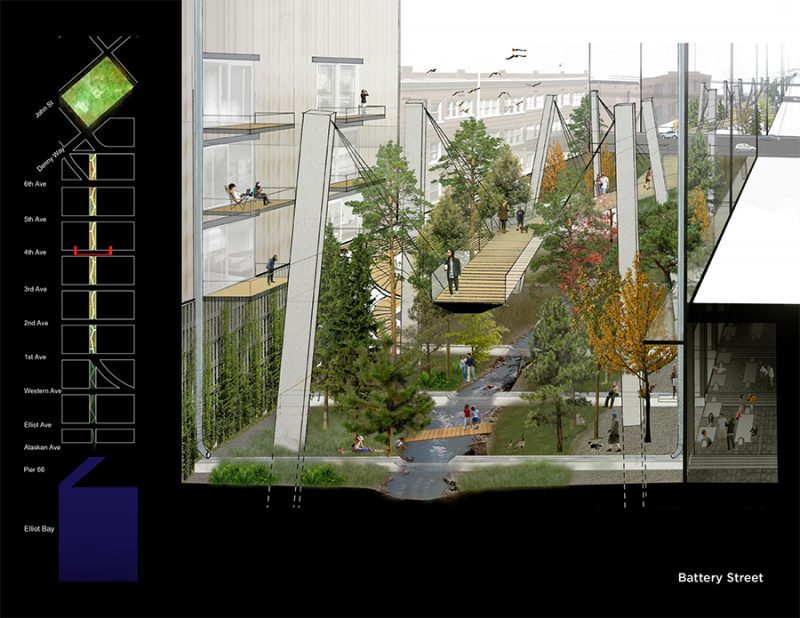Miller Hull
- Portfolio
- Approach
- News
Events
Posted August 18, 2025
- About
- Connect
The Miller Hull Partnership proposes turning a defunct Seattle tunnel into a landscaped canyon
Source: Metropolis Magazine
8-10-2018 | News
by David Cole

During the 20th century, it wasn’t uncommon for prominent architects to put forth bold visions for the future of cities. Frank Lloyd Wright presented his initial ideas for Broadacre City in 1932 and continued refining them until his death in 1959. During the postwar era, Buckminster Fuller proposed enclosing part of Manhattan under a geodesic dome, and Paul Rudolph famously proposed a Brutalist megastructure over the Lower Manhattan Expressway, still a glimmer in Robert Moses’s eye at that time.
Perhaps chastened by the reactions to such grandiose schemes, the architecture profession from the 1980s onward took a more conservative tack, generally preferring to pour its most ambitious efforts into corporate projects. At the same time, the automobile-oriented orthodoxy of postwar American urban planning began to be seriously questioned. Infrastructure that seemed visionary in the 1950s is now considered archaic and anti-urban.
In Seattle, the Alaskan Way Viaduct—built as part of a postwar expressway project that sliced the waterfront off from the rest of downtown in a manner that Robert Moses himself might have conjured up—is rapidly approaching the end of its life as a conduit for automobiles. The fate of one viaduct segment has been especially debated: The Battery Street Tunnel, which travels underneath six blocks of downtown Seattle.
Related Articles
UWPD receives Citation Award for the 2017 Justice Facilities Review
The University of Washington’s campus police serve nearly 68,000 students, faculty, staff, and visitors within the…
8-31-2017 | News
Miller Hull at SCUP Pacific Northwest Regional Conference
Partner Ruth Baleiko will present 'Co-location, Co-delivery and Co-explanation: The New UCSD Teaching + Learning Commons'…
3-17-2017 | Events
Miller Hull places #31 on Architect 50 list
Miller Hull has placed #31 on the 2016 Architect Magazine 'Architect 50' list, an annual ranking of…
9-7-2016 | News
Construction of the North American consulate in Yucatan begins
MÉRIDA, Yuc., December 4 (EL UNIVERSAL) .- Mexican and United States authorities officially inaugurated the progress…
12-4-2020 | News
WestPac Wealth Partners Develops its Associates While Helping its Customers
By Brad Graves 2. MILLER HULL Miller Hull is an international architecture and planning firm with a…
9-8-2020 | News
××